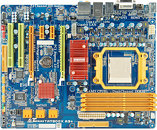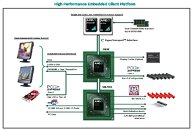
Haswell to Use 4th-Level On-Package Cache to Boost Graphics Performance
Intel is making serious efforts to boost CPU-integrated graphics performance using homegrown architectures, without having to borrow/license any technologies from the other two major players in the PC graphics business that have technological edges over Intel, and hence make high-performance discrete-GPUs (NVIDIA and AMD). Intel's architecture that succeeds Ivy Bridge, codenamed Haswell, will be at the receiving-end of a significant advancement in GPU performance.
We know from history, that Intel carves out variants of chips using a common silicon, by toggling the amount of L3 cache available, number of cores, and even number of iGPU shaders, apart from other natural handles such as clock speeds, voltages, and feature-set. With Haswell, the highest iGPU configuration will make use of a 4th-level cache (L4 cache), that sits on the package, while not being a part of the Haswell silicon. The Haswell silicon will instead be placed on a multi-chip module (MCM) along with a separate die that holds this L4 cache. The L4 cache will serve as a fast memory for the iGPU, while reducing or completely offloading the iGPU's dependency on the system memory as a frame-buffer (UMA).
We know from history, that Intel carves out variants of chips using a common silicon, by toggling the amount of L3 cache available, number of cores, and even number of iGPU shaders, apart from other natural handles such as clock speeds, voltages, and feature-set. With Haswell, the highest iGPU configuration will make use of a 4th-level cache (L4 cache), that sits on the package, while not being a part of the Haswell silicon. The Haswell silicon will instead be placed on a multi-chip module (MCM) along with a separate die that holds this L4 cache. The L4 cache will serve as a fast memory for the iGPU, while reducing or completely offloading the iGPU's dependency on the system memory as a frame-buffer (UMA).







